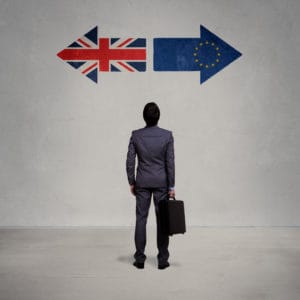Just outside the window, the Bow Bells chime as abrdn’s global head of investment execution, Louise Drummond, explains how the asset manager has kept its place among the giants.
With £532 billion under management the FTSE 100 asset manager gives the bells a run for their money in the age department, spanning back 197 years. Today, the firm has its fingers in many pies, boasting a strong global presence across asset classes and in both passive and active investment strategies.
“We have a high calibre global trading team where every trader is a specialist in the asset class that they trade,” she says. “Having specialists who understand markets and where things should be priced even in the most illiquid markets is key.”
Drummond believes the key to her own success has been the breadth of knowledge she has acquired across the buy- and sell-side, having previously spent several years at investment manager Charles Stanley, Bank of Montreal, JP Morgan Asset Management and Merrill Lynch.
“It’s important that you understand what’s happening on the other end of that trade,” she says. “As much as things have changed with technology, I still put that onto what I know from many years ago. I think the other key as well is to have traded most markets. You understand the business and complexities.”
Future proofing
The £11 billion merger of Aberdeen and Standard Life in 2017 left a fragmented spaghetti mess of divisions and systems in place that comes with the territory of merging two asset managers together. The firm is now in the process of untangling itself and future-proofing its extensive business through a series of overhauls, kicking things off with a new identity coined in April last year. Now to be referred to as abrdn, the rebrand united five former names under one umbrella. The process seems to be working and in 2021 the institution reported its first year of revenue growth since the merger, with full-year results showing fee-based revenue rising to £1.5 billion, a 6% increase on the previous year, while operating profits doubled.
abrdn has also made recent inroads into the booming retail market: including plans to acquire retail investment network and information provider, Finimize, announced in October; and its planned acquisition of retail giant investment platform, Interactive Investor, from JC Flowers & Co for an eyewatering £1.49 billion in cash in December (a deal that is still awaiting shareholder approval).
For Drummond, however, the future of the trading desk lies in technology. Automation is at the heart of her key objectives for the year to come. abrdn has seen a significant rise in automated flows in the last 12 months, she confirms, including newer trading protocols across algos, portfolio trading, all-to-all trading, and auctions, among others. The institution is an emerging markets house and one that often executes large trades over days or weeks at a time. Automating liquid trades is about taking the noise off the trading desk and refocusing traders’ time and efforts onto less liquid and larger trades, adds Drummond.
“Due to the size of our AUM and complexity of some of our trades we will never be completely low touch. Where I would like to get to would be that trades that meet the requirements for automation would not come to the desk, the parameters would be built into our OMS [order management system] and the trades would not touch the desk and would instead go straight to the relevant trading platform and be automatically executed. That’s the Havana of low touch,” she says.
“We’re future proofing ourselves by making sure that we can get all the noise off the desk and automate that. Do we want to touch trades that we’re not adding any alpha to? No, we don’t. The trader is there to trade and by automating the more liquid trades this allows them to focus on the more complex trades where they can add alpha and frees up their time to have more client engagement on solutions.”
abrdn also has an extensive passive business and automation lends itself the cost model sourced through those methods of investment, adds Drummond.
Streamlined systems
Following the merger, the asset manager has also recently undergone an overhaul of its order management providers, a process which has taken several years, slimming down from two separate versions of Charles River and one of thinkFolio to one Charles River option, in a bid to simplify its complex web of systems. Later in the year, abrdn plans to upgrade this further to support its automation journey.
“We were using thinkFolio mainly for our quantitative businesses but it’s now moved onto Charles River. As a house, we’re rarely a first adopter of anything, we usually sit back and observe and make sure we know where the trends are, where things are going, to make sure they’re optimal before we sign up. There are so many providers that come along at a time and say they’ve got a good idea so it’s important to make sure it’s got legs,” she says.
 “We are moving onto the latest version of Charles River later this year and will be looking at what new functionality it may have that could allow us to automate more of our flow directly from our order management system to platforms and venues. The next step in this journey is to be truly low touch with the simple trades not touching the desk, and having the logic built into our OMS.”
“We are moving onto the latest version of Charles River later this year and will be looking at what new functionality it may have that could allow us to automate more of our flow directly from our order management system to platforms and venues. The next step in this journey is to be truly low touch with the simple trades not touching the desk, and having the logic built into our OMS.”
The asset manager also uses FlexTrade for its equities business. At the time of implementation of the OMS, it surveyed various execution management systems, however, ultimately decided that FlexTrade was more mature in the equities space. Even though abrdn doesn’t have direct connectivity with liquidity providers – other than FIX lines on futures – the consultation announced by the European Securities Markets Authority (ESMA) in January earlier this year that could result in changes to the definition of a venue under MiFID II has meant Drummond is monitoring any potential future developments or integrations that could see the asset manager fall under the changing regulation’s scope.
ESMA’s consultation set out plans to firm up its definition of a trading venue to level the playing field earlier this year, potentially bringing execution management systems under the scope of its regulation and subsequently leading to greater costs for those buy-side firms that have chosen to integrate them. A change which in Drummond’s opinion could lead to dampening of innovation and competition in the space.
“Any system that we use that brings a buyer and seller together could be considered as a trading venue and would need to be registered as that. This could lead to greater costs to the industry and innovation hampered as potential increased cost would impact new solutions and evolving technology coming to the market,” she explains.
“The industry is shrinking with its fees with the ongoing passive model so we need to make sure that we are aware of the charges surrounding a trade and who we’re connected with. If you’ve got more funds and there’s a more complex structure, EMSs become more difficult to use. How will you merge all of your funds? How will you split those funds up to trade? There’s no added benefit versus an order management system.”
A watchful eye
Alongside changes to what is considered a venue under EU regulation, Drummond is keeping a watchful eye on several other structural and regulatory developments in the market that could impact her flock, not least the ongoing cost and ownership of data debate and plans for a consolidated tape (see p38 for further insights into the cost of market data in our feature: ‘Data is too expensive and here’s why’.)
Market data has been the source of much contention in the industry for several years, with many participants begrudged at the soaring costs of acquiring it, laying blame at the door of incumbent exchanges and trading venues that hold a monopoly over the data accumulated by trades that take place on their platforms.
So much so that regulators on either side of the channel have begun investigating competition concerns around the cost of data including the UK’s Financial Conduct Authority (FCA), which launched an investigation in January examining costs around essential and limited indices and benchmarks and whether high trading costs are limiting the number of new entrants into the market.
“There is an increased need for use of data which we collate and analyse in house to see patterns and trends developing. This plays a part in adapting our route to market and the counterparties that we use; however, you can’t get it in or from one source which ideally we would like and the cost of getting fragmented data can be expensive,” says Drummond. “Distributed ledger technology is resulting in new solutions coming to the market which will impact the way data is shared and owned, and hopefully resolving who owns the data.”
One such solution favoured by institutions across the street is the implementation of a consolidated tape, something that EU regulators set out plans to pave the way for in their recent Capital Markets Union (CMU) update in November. The UK shortly followed suit, announcing in March its plans to implement one or several tape providers for each asset class using either pre- and post-trade, or one or the other. The requirements of a consolidated tape range depending on whether you sit on the buy- or sell-side but for Drummond, deferrals are key to prevent information leakage.
“We need to ensure that deferrals are included because real time data especially in illiquid instruments could create liquidity and risk issues where the equity markets are real time,” she explains. “The UK and EU are both looking at a tape, however, the optimal solution would be to have a single tape so there is no fragmentation of data.”
Drummond is not alone in her wariness of divergent regulations between the UK and the EU post-Brexit, with most buy-side traders gingerly eyeing the developing situation. The lack of equivalence between the two entities, in particular for derivatives, has significantly altered the way institutions trade. As it stands, the current un-equivalent derivatives trading obligation (DTO) that exists between the UK and Europe has shifted a huge proportion of over the counter (OTC) trading to swap execution facilities (SEFs) in the US that have been granted mutual equivalence by authorities on either side of the channel.
“This has allowed UK asset managers to collate orders and execute in a single venue rather than splitting trades where the fund is domiciled and executing across multiple platforms,” says Drummond. “The DTO requirements have led to a reduction in available counterparties if you wish to execute on a UK venue, for example several EU banks operating branch structures in London are restricted from trading on UK trading venues even when facing non-EU clients.”
 Counterparties
Counterparties
abrdn has a larger roster of counterparties than most of its competitors, boasting connections with at least 17 liquidity providers via the International Swaps and Derivatives Association (ISDA) alone. Difficulties caused by regulatory divergence are one justification for such a wide network, explains Drummond. Many European banks have been unable to quote for UK clients post-Brexit and this has hindered many asset managers’ operations. However, the impact of this was not felt so heavily by abrdn because of the wide selection of alternative options it was able to trade with. As an emerging markets house, abrdn often trades in illiquid markets, and this too lends itself to connecting with a larger number of liquidity options.
“Some of our peers don’t [use lots of counterparties] but we do and the reason is to make sure that we have access to all liquidity providers. If we are investing in a local market we’re not going to just go to the big players that are predominantly the big banks,” she says.
“There might be some small brokers that have access to clients and liquidity that maybe the big players don’t have. When a trader is looking at it they’re not just thinking how and why, but also where, and this could be in another region. We like to have the flexibility to deal where there is most liquidity so when orders come over to the team, if we feel there’s more liquidity in other time zones, we make sure those trades are directed there. However, when we have larger trades to execute, if we decide to partner with one counterparty we have a mutual trust. We don’t show our trades around the market and we work with them to get trades executed – which can be days and weeks at times. It’s key to leave a small as possible a footprint in the market, which we believe we do.”
Do you understand data?
New and diverse talent are at the heart of preserving an institution, says Drummond, and an understanding of data is now a central requirement for anyone wishing to join abrdn. The amount of data needed to trade is only set to grow greater, particularly in light of new and developing requirements around environmental, social and governance (ESG) regulation, and it therefore plays a key role in the institution’s hiring process.
“It’s looking at the data and all the outcomes we get and being able to say this worked and this could be improved. Looking at how teams work, who we trade with and fine tuning everything so we get better. The more data we get, the more knowledge we have,” she explains.
“We’re realising a different skillset. Throughout covid we’ve relied on the seasoned experience of our traders in volatile markets. The new people we’re bringing in are focused on the data. Now when we hire new traders here they start off examining data and making observations on our processes and how we do things. It’s a fresh pair of eyes,” she concludes.